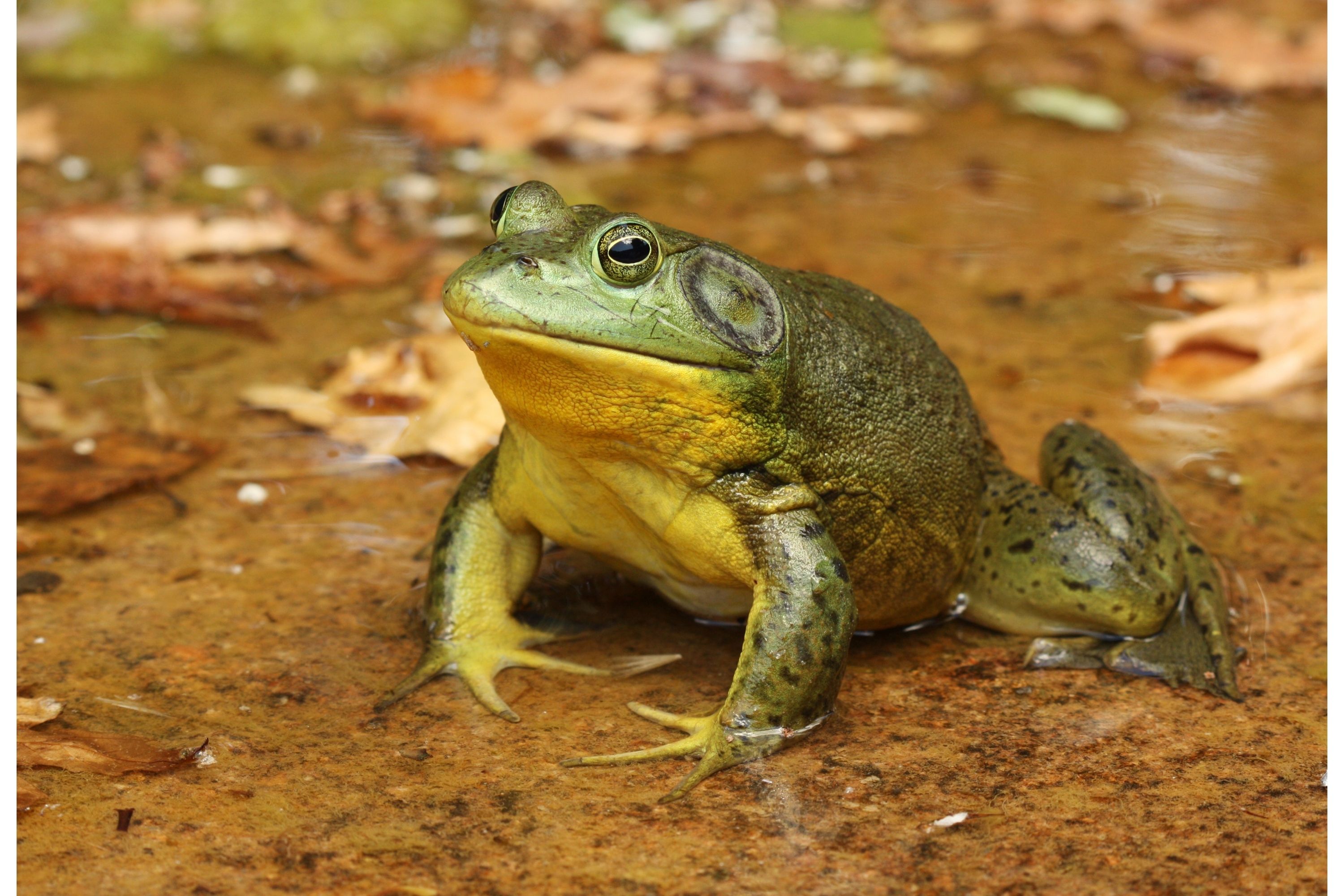American bullfrog
(Lithobates catesbeianus)

Description
The American bullfrog (Lithobates catesbeianus), often simply known as the bullfrog in Canada and the United States, is a large true frog native to eastern North America. It typically inhabits large permanent water bodies such as swamps, ponds, and lakes. Bullfrogs can also be found in man made habitats such as pools, koi ponds, canals, ditches and culverts. The bullfrog gets its name from the sound the male makes during the breeding season, which sounds similar to a bull bellowing. The bullfrog is large and is commonly eaten throughout its range, especially in the southern United States where they are plentiful. Their presence as a food source has led to bullfrogs being distributed around the world outside of their native range. Bullfrogs have been introduced into the Western United States, South America, Western Europe, China, Japan, and southeast Asia. In these places they are invasive species due to their voracious appetite and the large number of eggs they produce, having a negative effect on native amphibians and other fauna. Bullfrogs are very skittish which makes capture difficult and so they often become established. Other than for food, bullfrogs are also used for dissection in science classes. Albino bullfrogs are sometimes kept as pets, and bullfrog tadpoles are often sold at pond or fish stores. The dorsal (upper) surface of the bullfrog has an olive-green basal color, either plain or with mottling and banding of grayish brown. The ventral (under) surface is off-white blotched with yellow or gray. Often, a marked contrast in color is seen between the green upper lip and the pale lower lip. The teeth are tiny and are useful only in grasping.The eyes are prominent with brown irises and horizontal, almond-shaped pupils. The tympana (eardrums) are easily seen just behind the eyes and the dorsolateral folds of skin end close to them. The limbs are blotched or banded with gray. The fore legs are short and sturdy and the hind legs long. The front toes are not webbed, but the back toes have webbing between the digits with the exception of the fourth toe, which is unwebbed.
Taxonomic tree:







